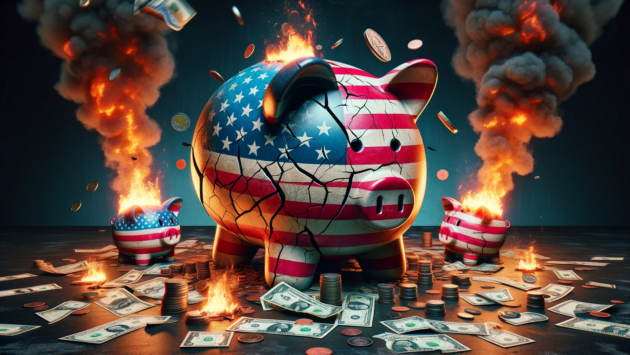
At this point, you’ve likely seen news of the Silicon Valley Bank failure and its multi-billion-dollar bond market losses. And you may have seen how these losses have also affected startup companies with deposits with SVB above $250,000.
The bank was forced into insolvency by its own depositors, and this act of financial self-mutilation was triggered when SVB’s depositors began withdrawing their funds. And then, in a bank run, SVB ran out of funds to fulfill those withdrawals. As a result, the federal government shut SVB down, and the depositors who could not get their funds back were handed over to the FDIC.
Then came the Biden administration’s solution, which will give all depositors access to their funds immediately by creating a new Federal Reserve lending operation that SVB can access but is now open to all banks to use.
In this case, 90% of the depositors in SVB were startups with an average of $4M in the bank each — way above the $250,000 threshold of the FDIC insurance coverage.
The dumb depositors
What about the idea of making the depositors whole in this case? They are not naïve individuals. They are the most sophisticated tech companies, funded by some of the biggest venture capital firms. One might say that leaving millions of dollars in each bank account — when they know well and should know about the risks of having more than $250,000 in a single account — is not the definition of being cautious or smart.
Weeding out depositors who exceed the FDIC-insured limit or anyone making dumb financial decisions is a basic feature of capitalism. But nothing about guaranteeing deposits of more than the $250,000 limit is leaning on capitalism, so let’s look now at the bank…
The negligent bank
If the startups and the VCs were dumb enough to leave these enormous amounts of uninsured funds in their accounts, the bank would be even dumber than dumb. It was negligent.
SVB executives were using the funds to buy bonds, but unlike conservative financial players, they did not hedge the bonds with financial instruments in case the bonds dropped in value.
They were warned by the Fed many times, by bank employees and even by third-party financial analysts, but they did not do anything to de-risk their portfolio. I mean, these instruments carry a cost, but that is expected from a conservative bank. SVB should not be spared from the actions of its executives. So, let’s review the government’s solution.
The “bailout” lending program
The lending program created by the government offers 100% coverage of depositor funds by using assets from the bank as collateral. The assets were valued “at par” for this purpose, which in this case means that for loan purposes there are no market losses.
The issue is that the bonds SVB is using as collateral are worth less today than when the bank acquired them. In other words, SVB bought bonds at a certain price, the bonds declined in price, and SVB did not hedge their bet, so they lost money. And if they are short of funds, the Fed will lend SVB funds against these bonds for their much higher original purchase price.
Guess who is paying for that lending program?
All SVB deposits are now being backed by this government loan program. And what did SVB do immediately? It reached out to clients and said it is now the safest bank around, fully backed by the federal government.
And who is ultimately behind any type of government loan program? Who will cover it? Easy answer: It’s you and I.
“Unlimited [deposit] insurance … would be very expensive to do. It would be assessed on the banking system, backstopped by taxpayers, and would primarily help very, very wealthy people,” former FDIC chair Sheila Bair said in a recent interview with The Washington Post.
And why doesn’t this loan program come with terms? Such as no bonuses or any executive compensation for any bank taking this loan until the loan is fully repaid?
And we thought we ended “bailouts” after 2008.
————————–
If you haven’t yet diversified your savings with physical gold, consider these two options
1. Get a FREE copy of our 2023 Gold Information Kit personalized to match your situation, goals and needs.
2. Speak with one of our Gold Specialists about the benefits of shifting a part of your 401(k) or savings into a Gold IRA. Dial toll-free 888-529-0399 now for a FREE consultation where you’ll get clear, useful answers to all your questions. And when you decide you’re ready to make your move, we’ll make everything simple, safe and easy for you. There’s no cost or obligation.



